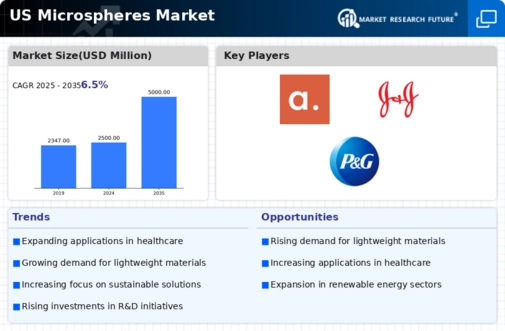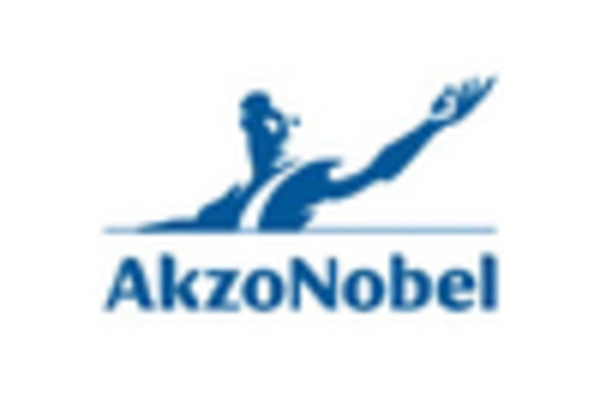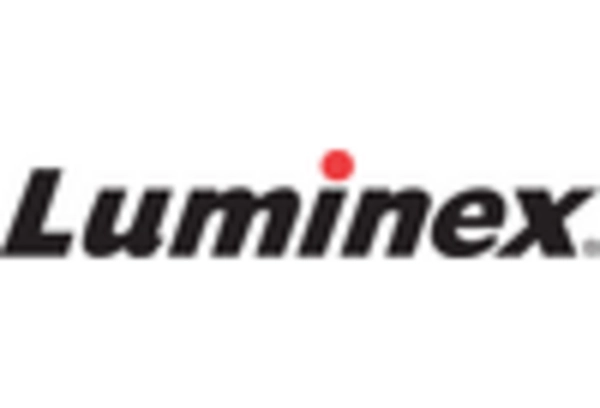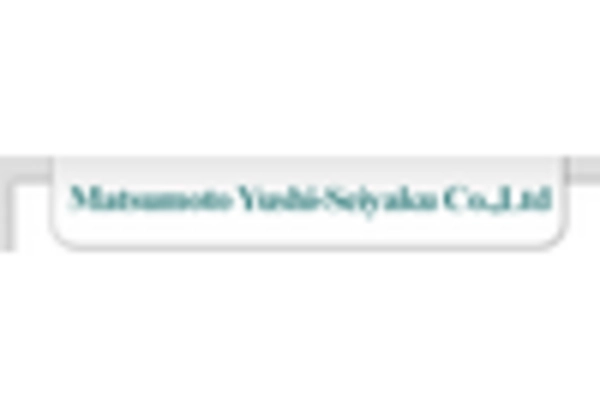Increased Investment in R&D
Investment in research and development (R&D) is a crucial driver for the microspheres market, as companies strive to innovate and improve product offerings. Enhanced R&D efforts are leading to the discovery of new applications for microspheres, particularly in the fields of drug delivery and diagnostics. The US government and private sector are allocating substantial funds towards R&D initiatives, which is likely to foster innovation and accelerate market growth. For instance, the pharmaceutical industry is increasingly utilizing microspheres for targeted drug delivery systems, which could enhance therapeutic efficacy. This trend indicates a promising future for the microspheres market, with potential revenue growth projected to reach $1 billion by 2027, driven by innovative applications.
Expansion of End-User Industries
The expansion of end-user industries is a vital driver for the microspheres market, as sectors such as healthcare, construction, and electronics increasingly adopt microsphere technology. In healthcare, microspheres are utilized for drug delivery and imaging applications, while in construction, they enhance the performance of coatings and insulation materials. The electronics industry is also exploring the use of microspheres in various applications, including circuit boards and displays. This diversification across multiple sectors is likely to bolster market growth, with the US microspheres market projected to reach $800 million by 2026. The increasing adoption of microspheres across these industries indicates a robust demand, suggesting a positive outlook for the market.
Rising Demand in Automotive Applications
The automotive sector is emerging as a significant driver for the microspheres market, as manufacturers seek lightweight materials to improve fuel efficiency and reduce emissions. Microspheres are being integrated into various automotive components, including interior parts and coatings, to achieve weight reduction without compromising performance. This trend is particularly relevant in the US, where regulatory pressures for lower emissions are prompting automakers to explore innovative materials. The demand for microspheres in automotive applications is expected to grow at a CAGR of approximately 6% over the next few years, reflecting the industry's commitment to sustainability and efficiency. As the automotive sector continues to evolve, the microspheres market is likely to benefit from this growing trend.
Growing Interest in Sustainable Materials
Sustainability is becoming a pivotal driver in the microspheres market, as industries increasingly seek eco-friendly alternatives. The demand for biodegradable microspheres is on the rise, particularly in the cosmetics and food sectors, where consumers are more conscious of environmental impacts. Companies are investing in research to develop microspheres from renewable resources, which could potentially reduce the carbon footprint associated with traditional materials. This shift towards sustainability is not only beneficial for the environment but also aligns with consumer preferences, thereby enhancing market opportunities. In the US, the market for sustainable microspheres is expected to grow at a CAGR of around 7% in the coming years, reflecting a significant trend towards environmentally responsible products.
Technological Advancements in Manufacturing
The microspheres market is experiencing a surge due to technological advancements in manufacturing processes. Innovations such as 3D printing and advanced polymerization techniques are enhancing the production efficiency and quality of microspheres. These advancements allow for the creation of microspheres with tailored properties, which are increasingly sought after in various applications, including pharmaceuticals and cosmetics. The ability to produce microspheres with specific sizes and functionalities is likely to drive market growth. Furthermore, the US market is projected to witness a compound annual growth rate (CAGR) of approximately 8% over the next five years, indicating a robust demand for high-quality microspheres. As manufacturers adopt these technologies, the microspheres market is expected to expand significantly, catering to diverse industry needs.

















Leave a Comment